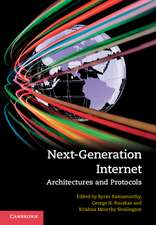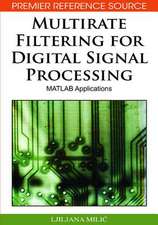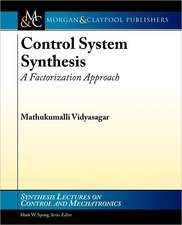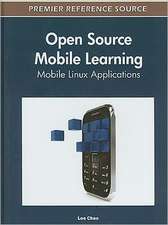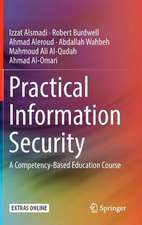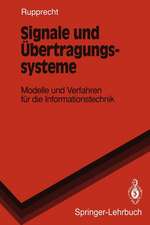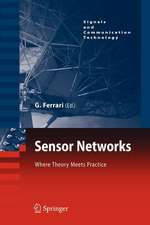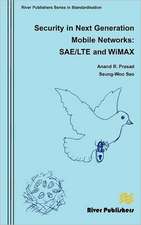Information Fusion for Cyber-Security Analytics: Studies in Computational Intelligence, cartea 691
Editat de Izzat M Alsmadi, George Karabatis, Ahmed Alerouden Limba Engleză Hardback – noi 2016
| Toate formatele și edițiile | Preț | Express |
|---|---|---|
| Paperback (1) | 615.14 lei 38-44 zile | |
| Springer International Publishing – 16 iun 2018 | 615.14 lei 38-44 zile | |
| Hardback (1) | 862.75 lei 38-44 zile | |
| Springer International Publishing – noi 2016 | 862.75 lei 38-44 zile |
Din seria Studies in Computational Intelligence
- 20%
 Preț: 449.37 lei
Preț: 449.37 lei - 20%
 Preț: 1158.26 lei
Preț: 1158.26 lei - 20%
 Preț: 986.66 lei
Preț: 986.66 lei - 20%
 Preț: 1452.76 lei
Preț: 1452.76 lei - 20%
 Preț: 168.78 lei
Preț: 168.78 lei - 20%
 Preț: 1291.10 lei
Preț: 1291.10 lei - 18%
 Preț: 1112.30 lei
Preț: 1112.30 lei - 20%
 Preț: 565.39 lei
Preț: 565.39 lei - 20%
 Preț: 649.28 lei
Preț: 649.28 lei - 20%
 Preț: 1047.73 lei
Preț: 1047.73 lei - 20%
 Preț: 1578.96 lei
Preț: 1578.96 lei - 20%
 Preț: 643.50 lei
Preț: 643.50 lei - 20%
 Preț: 657.49 lei
Preț: 657.49 lei - 20%
 Preț: 993.28 lei
Preț: 993.28 lei - 20%
 Preț: 990.80 lei
Preț: 990.80 lei - 20%
 Preț: 989.96 lei
Preț: 989.96 lei - 20%
 Preț: 1165.69 lei
Preț: 1165.69 lei - 20%
 Preț: 1444.52 lei
Preț: 1444.52 lei - 20%
 Preț: 1041.96 lei
Preț: 1041.96 lei - 20%
 Preț: 1047.73 lei
Preț: 1047.73 lei - 20%
 Preț: 1046.06 lei
Preț: 1046.06 lei - 18%
 Preț: 2500.50 lei
Preț: 2500.50 lei - 20%
 Preț: 989.13 lei
Preț: 989.13 lei - 20%
 Preț: 1165.69 lei
Preț: 1165.69 lei - 20%
 Preț: 1164.05 lei
Preț: 1164.05 lei - 20%
 Preț: 1042.79 lei
Preț: 1042.79 lei - 20%
 Preț: 1460.19 lei
Preț: 1460.19 lei - 18%
 Preț: 1403.52 lei
Preț: 1403.52 lei - 18%
 Preț: 1124.92 lei
Preț: 1124.92 lei - 20%
 Preț: 1039.47 lei
Preț: 1039.47 lei - 20%
 Preț: 1008.11 lei
Preț: 1008.11 lei - 20%
 Preț: 1045.25 lei
Preț: 1045.25 lei - 20%
 Preț: 1275.42 lei
Preț: 1275.42 lei - 20%
 Preț: 1040.32 lei
Preț: 1040.32 lei - 20%
 Preț: 988.32 lei
Preț: 988.32 lei - 20%
 Preț: 1169.79 lei
Preț: 1169.79 lei - 20%
 Preț: 1162.37 lei
Preț: 1162.37 lei - 20%
 Preț: 1059.26 lei
Preț: 1059.26 lei - 20%
 Preț: 1164.05 lei
Preț: 1164.05 lei - 20%
 Preț: 1166.52 lei
Preț: 1166.52 lei - 20%
 Preț: 1459.38 lei
Preț: 1459.38 lei - 18%
 Preț: 1005.74 lei
Preț: 1005.74 lei - 20%
 Preț: 997.38 lei
Preț: 997.38 lei - 20%
 Preț: 1055.94 lei
Preț: 1055.94 lei - 20%
 Preț: 1284.47 lei
Preț: 1284.47 lei - 20%
 Preț: 994.08 lei
Preț: 994.08 lei - 20%
 Preț: 1048.72 lei
Preț: 1048.72 lei - 20%
 Preț: 1066.02 lei
Preț: 1066.02 lei - 20%
 Preț: 943.78 lei
Preț: 943.78 lei - 20%
 Preț: 1173.10 lei
Preț: 1173.10 lei
Preț: 862.75 lei
Preț vechi: 1135.20 lei
-24% Nou
Puncte Express: 1294
Preț estimativ în valută:
165.11€ • 171.74$ • 136.31£
165.11€ • 171.74$ • 136.31£
Carte tipărită la comandă
Livrare economică 11-17 aprilie
Preluare comenzi: 021 569.72.76
Specificații
ISBN-13: 9783319442563
ISBN-10: 3319442562
Pagini: 379
Ilustrații: X, 379 p. 85 illus., 61 illus. in color.
Dimensiuni: 155 x 235 x 26 mm
Greutate: 0.89 kg
Ediția:1st ed. 2017
Editura: Springer International Publishing
Colecția Springer
Seria Studies in Computational Intelligence
Locul publicării:Cham, Switzerland
ISBN-10: 3319442562
Pagini: 379
Ilustrații: X, 379 p. 85 illus., 61 illus. in color.
Dimensiuni: 155 x 235 x 26 mm
Greutate: 0.89 kg
Ediția:1st ed. 2017
Editura: Springer International Publishing
Colecția Springer
Seria Studies in Computational Intelligence
Locul publicării:Cham, Switzerland
Cuprins
Introduction.- Part 1: Information Fusion for Cyber-Security Analytics.- Activity Information Fusion for Security Analytics.- Location Information Fusion for Security Analytics.- Time Information Fusion for Security Analytics.- Individuality Information Fusion for Security Analytics.- Relation Information Fusion for Security Analytics.- Part 2: Trends in Using Information Fusion Techniques to Discover Cyber Threats.- Big Data Fusion for Predicting Network Threats.- Using Software Defined Networks for Cyber Threat Discovery.- Privacy Preserving Information Fusion for Analyzing Network Data.- Using Information Fusion to Discover Zero-Day Attacks.- Enhancing Social Network Privacy and Security Using Graph-based Data Fusion.- Using Information Fusion to discover Cyber-threats in Wireless Sensor Networks.- Information Fusion for Improving Privacy and Security in Healthcare Applications.- Predicting Social Engineering Attacks Using Information Fusion Techniques.- Part 3: Applications and tools. -Information Fusion Application and Tools for Cyber Security Analytics.- Conclusion.
Notă biografică
Dr. Izzat Alsmadi is an Assistant Professor in the department of Computer Science at the University of New Haven. He has his master and PhD in Software Engineering from North Dakota State University. He has more than 100 conference and journal publications. His research interests include: Software security, software engineering, software testing, social networks and software defined networking.
Dr. George Karabatis is an Associate Professor of Information Systems and Associate Chair for Academic Affairs in the Department of Information Systems. He teaches undergraduate and graduate courses in semantic data integration, data management, data communications and networking, database applications, and mobile applications. He is one of the founding members of DINAMIC, a research group of IS faculty and students who pursue research in intelligent information discovery in various application domains. His research work has been published in peer-reviewed journals, conferenceproceedings and book chapters. He has been funded by NSF, USGS, MD Board of Elections, Northrop-Grumman and IGSR. He holds a Ph.D. in Computer Science from the University of Houston.
Dr. Ahmed AlEroud is an Assistant Professor of Computer Information Systems, at Yarmouk University in Jordan. He has recently joined UMBC as a Visiting Associate Research Scientist in the Department of Information Systems. Dr. AlEroud has received his PhD in Information Systems from the University of Maryland, Baltimore County (UMBC). His research appears in several cyber security and information systems conferences, such as the IEEE/ASE International conference in Cyber-Security, the IEEE conference on software Security and Reliability, and the International Conference on Semantic Computing. He has served as a committee member and a reviewer in some conferences in several areas such as the first International Conference on Anti-Cybercrime (ICACC-2015) and the entropy Journal. p>
Dr. George Karabatis is an Associate Professor of Information Systems and Associate Chair for Academic Affairs in the Department of Information Systems. He teaches undergraduate and graduate courses in semantic data integration, data management, data communications and networking, database applications, and mobile applications. He is one of the founding members of DINAMIC, a research group of IS faculty and students who pursue research in intelligent information discovery in various application domains. His research work has been published in peer-reviewed journals, conferenceproceedings and book chapters. He has been funded by NSF, USGS, MD Board of Elections, Northrop-Grumman and IGSR. He holds a Ph.D. in Computer Science from the University of Houston.
Dr. Ahmed AlEroud is an Assistant Professor of Computer Information Systems, at Yarmouk University in Jordan. He has recently joined UMBC as a Visiting Associate Research Scientist in the Department of Information Systems. Dr. AlEroud has received his PhD in Information Systems from the University of Maryland, Baltimore County (UMBC). His research appears in several cyber security and information systems conferences, such as the IEEE/ASE International conference in Cyber-Security, the IEEE conference on software Security and Reliability, and the International Conference on Semantic Computing. He has served as a committee member and a reviewer in some conferences in several areas such as the first International Conference on Anti-Cybercrime (ICACC-2015) and the entropy Journal. p>
Textul de pe ultima copertă
This book highlights several gaps that have not been addressed in existing cyber security research. It first discusses the recent attack prediction techniques that utilize one or more aspects of information to create attack prediction models. The second part is dedicated to new trends on information fusion and their applicability to cyber security; in particular, graph data analytics for cyber security, unwanted traffic detection and control based on trust management software defined networks, security in wireless sensor networks & their applications, and emerging trends in security system design using the concept of social behavioral biometric. The book guides the design of new commercialized tools that can be introduced to improve the accuracy of existing attack prediction models. Furthermore, the book advances the use of Knowledge-based Intrusion Detection Systems (IDS) to complement existing IDS technologies. It is aimed towards cyber security researchers.
Caracteristici
Helps readers understand how combining machine learning and reasoning techniques aids in creating attack prediction models with higher accuracy; Provides information on utilizing several existing applications and tools to perform information fusion on machine learning tasks; Presents readers with the tools to apply the learned knowledge daily cyber-security tasks. Includes supplementary material: sn.pub/extras


